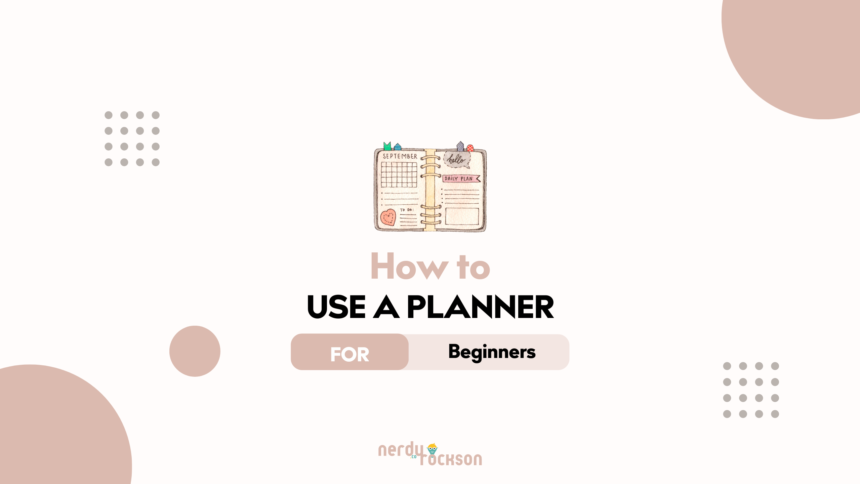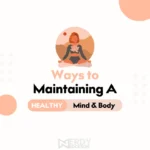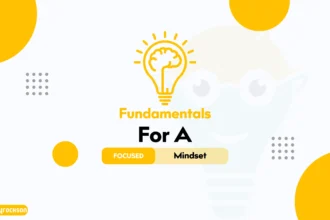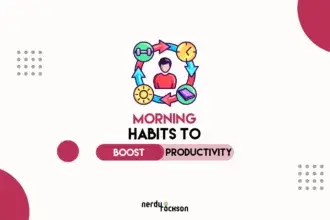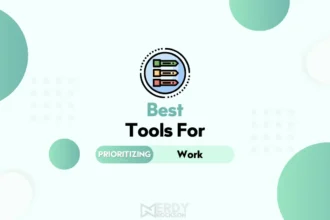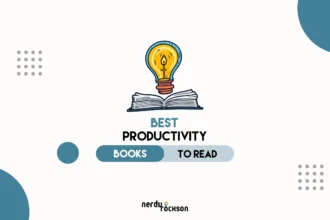Life can feel like a rollercoaster—full of unexpected ups, downs, twists, and turns. But, here’s the secret; having a plan can stop you from feeling side-swiped by life’s unpredictability. That’s why learning how to use a planner can be a true game-changer.
Planning and organizing are fundamental skills required for managing the many responsibilities that come our way every day. According to stats published in Cornerstone Dynamics, 80% of people believe that using a planner helps them manage their time effectively. This demonstrates how crucial understanding ‘how to use a planner’ can be in our daily lives.
The key is not to prioritize what’s on your schedule but to schedule your priorities.
Stephen Covey
Society is becoming more fast-paced, and the demands on our time are escalating. Thus, knowing how to use a planner efficiently is a life skill that can greatly enhance our ability to manage tasks, reduce stress, and increase productivity. This article aims to guide you, especially if you’re a beginner, on how to use a planner to channel your time and energy in the most efficient and effective ways.
So, whether you’re a busy student, career professional, homemaker, or simply an individual seeking to bring more order to your life, the strategies expounded in this article will significantly help. They’ll teach you how to use a planner to enhance your daily efficiency, allowing you to maximize your available time.
Buckle up! It’s time you learned how to use a planner like seasoned pros, nullifying the chaos, and focusing on what truly matters in your life.
Why Use a Planner
A planner is not just a calendar to track dates and events; it’s a crucial tool that improves productivity, and organization, and gives a clear perspective on one’s responsibilities. In an era crammed with distractions, a planner enables you to manage time effectively, maintain motivation, and keep focused on your goals. It works as a personal accountability partner, helping you to stay on top of your tasks, appointments, and other commitments. Essentially, using a planner equates to taking control of your life.
Choosing the Right Planner
Delving into the diverse world of planners, two fundamental types stand out – paper and digital. Each with its unique charm, the choice between them depends on your personal preference. Do you revel in the tactile feeling and freedom of personalization offered by a physical planner? Or are you drawn to the convenience and innovation built into digital planners? There is no wrong choice – only the one that aligns best with your lifestyle and needs.
If you’re a staunch believer in the ‘old school’ approach, a paper planner is your ally. It offers the unparalleled satisfaction of physically writing down your to-dos and crossing them off, fostering a sense of accomplishment. The flexibility to customize and decorate the pages can also serve as a creative outlet, further enhancing this experience.
But if you appreciate technology and its simplifying capabilities, a digital planner will be an excellent fit. These planners offer streamlined organization options, remind you of deadlines, and are always in your pocket, ready when inspiration strikes. Plus, the ability to effortlessly sync with your other devices ensures that your plans are always up-to-date.
So, it’s time to introspect. Consider your lifestyle, preferences, and convenience. Think about what features are most important to you in a planner. Is it portability, customization, or maybe a bit of both? Make an informed decision, and remember – the perfect planner is the one that you will use consistently.
Setting Up Your Planner
Are you ready to dive into the exciting process of setting up your planner? Let’s do it step by step.
The first step? Identify. What are the crucial elements you need to keep track of? Are they appointments, project deadlines, meal plans, or family events? Write them all down. Yes, every single one! This exhaustive list will be your roadmap, guiding you toward what needs a place in your planner.
Next, prioritize. Not all events or tasks hold an equal stake in your schedule. Decide what needs immediate attention and what can wait. Set your planner accordingly, providing ample space and highlighting your high-priority items.
Following up is organization. How will you organize your planner? By weeks, days, or hours? Maybe a different approach for different sections? Don’t be afraid to mix it up. Remember, the planner is built to serve you, not vice versa. Your organizational approach should align with your lifestyle and goals.
Now, let’s visualize. Use color codes, stickers, or different kinds of pens to make your planner more visually compelling. Keep it simple but make it fun. Isn’t there something gratifying in looking at a well-organized, attractive page?
Finally, make time to review. Spend a few moments at the start or end of each day to update your planner. This routine practice will keep you aware of what’s done, what lies ahead, and most importantly, how effectively you’re managing your time.
Remember, the setup phase might seem a little daunting, but once you establish a system that works, using a planner will become second nature. Remember, it’s about progress, not perfection. Ready to start?
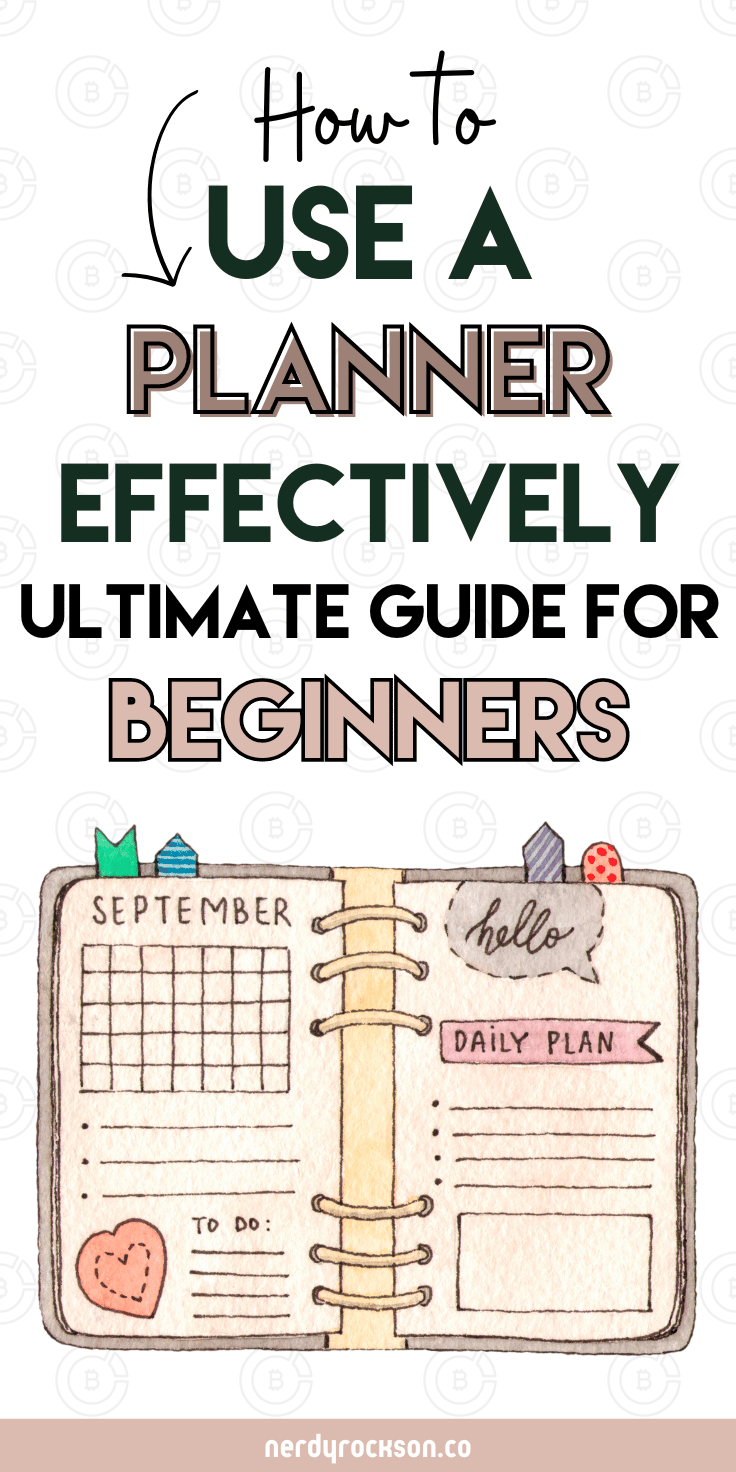
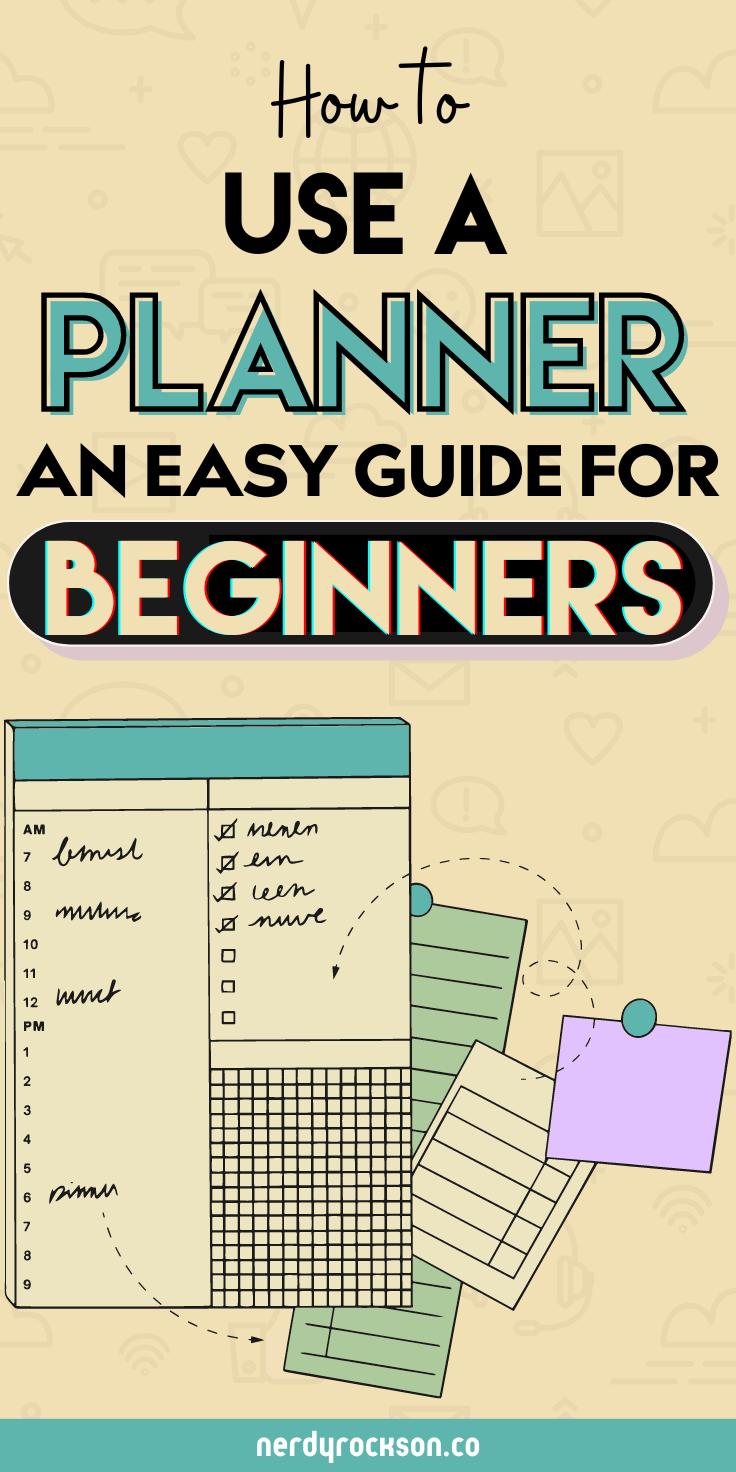
How to Use a Planner for Beginners
Learning how to use a planner effectively sounds simple, doesn’t it? However, it’s more than just scribbling to-dos or appointments. Let’s dive into some strategies you can employ to make your planner a powerful tool to navigate through your busy life.
Time Blocking: Have you ever wondered how so many successful people manage their time efficiently? One sure-fire strategy is time blocking. This is the process of allocating specific time slots in your day for particular tasks or activities. By assigning blocks of time for certain tasks, you’re significantly less likely to drift aimlessly through your day. Your planner becomes a visual schedule of your day, a guide to how you’re spending your precious hours.
Prioritizing Tasks: A common pitfall we often fall into is overwhelming ourselves with a never-ending list of tasks. Now, consider this – how do you decide which tasks are urgent or important? This is where the art of prioritization comes in handy. Make sure to highlight your high-priority tasks in your planner. You’ll find yourself tackling the most impactful tasks first, allowing you to make significant strides in your personal or professional life.
Setting Realistic Goals: As the saying goes, “A goal without a plan is just a wish”. Setting achievable objectives is an integral part of using your planner efficiently. And remember, the key word here is ‘realistic’. Outlining impossible tasks will only lead to dissatisfaction and failure. Instead, jot down feasible goals in your planner and break them down into manageable sub-tasks. This way, every small completion will bring you closer to your overall objective.
Regular Review and Update: Lastly, don’t let your planner turn into a static document. Schedule weekly or even daily times to review and update your planner. Reflect on what worked, what didn’t, and how you can adjust your plans for the future. Successful planning doesn’t rest on static plans but on your ability to adapt and thrive in the face of changing circumstances.
With these strategies in hand, there’s no doubt you’ll use your planner more effectively. Remember, the goal here isn’t perfection, but progress. How will you transform your productivity using your planner today?
Best Planner for Beginners
As a beginner, you need a planner that best suits your individual needs, and that’s easy to understand and navigate. Imagine having a tool that organizes your life in ways that make sense to you and cater to your unique style. The market offers numerous options that could potentially match your preferences.
Consider starting with a simple planner. A daily or weekly planner with ample writing space could be ideal. Here’s why: it provides you with a clear view of your schedule and tasks, helping you focus on what needs to be done immediately.
Instead of grappling with numerous features that you may not use, a simple planner allows you to document your plans effortlessly. Ultimately, the kinds of planners that work best for beginners are those that are user-friendly, have practical layouts, and offer just the essentials needed to achieve your organizational goals.
Remember, your planner should be your tool for productivity. There isn’t one ‘best’ planner—find a planner that works for you. Keep it adaptable and versatile enough to grow with you as your planning needs evolve.
Maintaining Your Planner
Learning how to use a planner effectively is just the beginning—maintaining and updating it routinely is where the real magic happens. This isn’t a one-time event but an evolving process that aids in your organizational skills growth. So how can you effectively maintain your planner? Let’s delve into it.
One essential tip is to cultivate the habit of checking your planner daily, whether it’s first thing in the morning, or last thing before bed. The beauty of consistency? It’s the very thing that turns actions into habits, & hence, check your planner regularly.
Now, we can’t talk about maintaining a planner without mentioning the importance of updating it frequently. It’s crucial to write everything down in your planner—all the essential meetings, deadlines, personal commitments, and reminders. You might think, ‘Oh, I’ll remember this’—but the truth is, our brains are not designed to remember every detail amidst the hustle and bustle of daily life.
And here is the importance of having everything in the same planner. Avoid using separate planners for school, another for work, and a third for personal tasks. A singular consolidated platform prevents overlooking crucial tasks or double-booking conflicting events.
In addition to the daily entries, don’t forget to utilize the monthly calendar feature in your planner too. It gives the complete bird’s eye view, helping you to judge your availability quickly and plan long-term projects efficiently.
Remember, the key to mastering how to use a planner is steadfast consistency and routine. A planner well-maintained is like an effective PA by your side, keeping you on top of your tasks so you can be the master of your time, not the other way round. It’s the daily commitment to your planner that creates an organized life!
Common Mistakes and How to Avoid Them
Just as with any new skill, beginners often make common mistakes when first learning how to use a planner. Don’t worry, though; it’s all part of the learning curve, and it’s something we can overcome by being conscious of potential pitfalls. Let’s dive into some of these mistakes and discuss practical solutions to avoid them.
#1: Overstuffing Your Planner: As beginners, you may be tempted to document everything in your planner. This practice can quickly lead to overfilling and, consequently, overwhelm. Does everything merit a spot in your planner? Probably not.
So how do you manage this issue? Start by prioritizing. An excellent strategy is to ‘Create a Top 3 for the day’, which naturally weeds out less crucial tasks. And if something takes less than 2 minutes to do, go by the ‘2 Minute Rule’—getting it done immediately, rather than putting it off till later.
#2: Being Too Vague With Your Tasks: A vague task can overwhelm beginners just because you might not understand exactly what you need to do. “Work on a project,” isn’t as easy to accomplish as “Draft project proposal outline.”
The solution? Make your tasks specific and smaller. Breaking tasks into manageable, bite-sized parts makes them less daunting and more straightforward to execute.
#3: Neglecting Regular Reviews: Many beginners make the mistake of not regularly assessing their planner. Remember, a planner is not a space for random notes; it’s an active tool used for strategizing, organizing, and reflecting on tasks and events. Failure to review can lead you to miss crucial details or deadlines.
Consider incorporating weekly, monthly, and yearly task reviews in your routine. Regular assessments can provide a broader perspective on your tasks and help you make necessary adjustments along the way.
In conclusion, always remember that mistakes are opportunities for learning and growth. As Brian Tracy wrote in ‘Eat That Frog! 21 Great Ways to Stop Procrastinating and Get More Done in Less Time‘, “Never miss another deadline.” Learn, adjust, and keep improving your planner skills. You’ve got this!
Benefits of Using a Planner
You might be wondering, “Why put in the effort to use a planner?”. Well, the reality is, that the benefits of utilizing a planner are multifaceted and reach far beyond just keeping track of your daily tasks. A well-maintained planner can do wonders for your productivity and overall well-being. Allow me to enlighten you on how a simple planner can positively transform your life:
- Enhanced Time Management: With your duties and commitments listed down, you get a better picture of your time allocation. This can help you prioritize tasks, avoid time-wasting activities, and make the most of your day.
- Increased Productivity: When you have a visual reminder of your tasks, you’re more likely to complete them. Plus, the satisfaction of ticking off tasks from your list spurs motivation and boosts productivity.
- Reduced Stress Levels: Stress often arises from feeling overwhelmed. By listing down tasks, which gives a clear overview of your responsibilities, you can organize and tackle them systematically, effectively reducing stress.
- Better Focus: With your tasks and goals neatly compiled, it’s easier to maintain focus on what truly matters. Your planner becomes a tool to eliminate distractions and enhance focus.
- Improved Physical Health: Yes, you read that right. Stress reduction and productive actions lead to improved sleep, better eating habits, and overall enhanced health.
- Boosted Memory: The act of writing down tasks and responsibilities can help cement them in your memory. Plus, regularly revisiting your planner strengthens recall.
- Growth Tracking: Your planner can serve as a record of your progress, helping you reflect on your growth, track changes, and celebrate milestones.
Each person’s journey with a planner can be as unique and individual as they are. The key is to be patient, disciplined, and open to discovering what benefits you can experience personally. How about we turn our attention now to the initial steps to take to start using a planner?
Conclusion
In conclusion, the journey of learning how to use a planner is indeed a rewarding one. We’ve explored the reasons behind the need for a planner, the importance of choosing one that suits you best, and the methods to effectively set up and maintain it. Furthermore, we’ve delved deep into the significant benefits it brings like increased productivity, targeted goal setting, reduced stress, enhanced organization, and finally, much-needed perspective in life.
Remember, a planner is not just a tool; it’s a lifestyle choice that can lead to astounding personal growth and development. So, why not take the leap? Grant the trusty planner a chance to help you chart out a path of structure, efficiency, and progress. The first step might feel daunting, but rest assured, the rewards are endless.
Just imagine a life less chaotic, more structured, and filled with completed goals that once seemed challenging. Isn’t that worth embracing? So go forth, pick up that planner, and start the beautiful journey of molding your life one day, one goal at a time.
